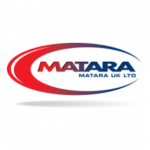Ask the experts: The evolution of the linear rail
Linear rail actuators are used in a whole range of industries for a vast array of jobs. The selection of the right linear rail for both the environment and the specific requirements of the linear rail actuator in question can require you to consider a range of features including speed, load, repeatability, cycle times and environment. The linear rail is often a feature of the overall system which is overlooked or taken for granted. Selecting the right one, whether for a simple, basic actuator or where a bespoke linear rail set-up is required, is critical to ensuring that the actuator can perform effectively and with optimum levels of efficiencies.
Accuracy of linear rails
One of the considerations when designing a linear rail actuator must be the accuracy grade of the linear rails in terms of how parallel they run in relation to one another. The measurement used by the linear rail industry is parallelism per linear metre, and there is a grading system in place that ranges from normal to ultra-precision, with high, precision and super-precision in between. This classification has remained in place for a many years, but in the meantime, the production methods and machinery used by manufacturers has vastly improved since their designation, meaning that the grinding accuracy of the rail, carriage and ball bearings is more widely achievable than they were in the past. Twenty years ago, many manufacturers designed their own bespoke linear rail actuators – not because they needed a specialist solution, but because of the relative costs of the systems back then; thankfully, a problem of the past.
The demand in the UK for ultra-precision grade linear rails is comparatively low due to the types of applications of many of the linear rail actuators used here. Often employed in applications such as pick and place for manufacturers or in packing and packaging, in the control of entrances and doors or in combination with guided rodless cylinders for picking out non-conforming goods on a conveyor, the accuracy required of the linear rail system is often not as high as the accuracy of the linear rail that is actually supplied.
Matara has been working in partnership with Precision Motion Industries (PMI) for almost 20 years. During that period, thanks to investment in grinding and manufacturing technologies, the accuracy of the linear rails produced by PMI has increased dramatically. Over 90% of the N grade rail produced is, in reality, more accurate than H grade standards that are found in the majority of catalogues. Both the H and P grades of linear rail that Matara stocks also surpass industry standards. The upshot of this is that in many cases, the linear rail that Matara’s customers receive is actually better than that which they requested.
Loading of bespoke linear rails
One element of linear rail actuator design that is often miscalculated is the total load weight across the full length of the rail. An example of this would be to take a single PMI Linear Rail with a 15mm carriage; this can take a static load of 18.9kN or a dynamic load of 11.8kN. Often, each individual carriage is only moving up to 30 kg. However, if additional loads are added to the rail with the same carriage and weight requirement in multiples, the total loading of that rail can increase by a factor of 6 or higher, and rather than calculating the accumulated load, a simple addition calculation is often incorrectly used. It is important that the linear rail specified and installed is appropriate for the total load conditions during use.
Improvements for control and lifespan
An area of linear rail development that has undergone an evolution process rather than progressing in leaps and bounds, is related to the ball recirculation in the end caps. The development of this in line with the system as a whole has resulted in an increase in acceleration and deceleration control through the reduction of friction, which also ultimately ensures a longer product life.
PMI, with whom Matara are proud to have an exclusive partnership, make the technologies and processes of linear rail production look simple, but as a collaborative partnership they excel in a highly competitive environment to provide their customers with systems which are both efficient and cost effective.
Get the latest process industry news
Interested in receiving even more industry-leading news from Process Industry Forum delivered directly to your inbox? Then sign up to our free newsletter. Bringing you the latest news, trends, innovations and opinion from across the process industry, our exclusive newsletter gives you all the industry insights of the moment in one, easy-to-digest bulletin. Stay ahead of the competition with regular process industry news instalments from PIF.

